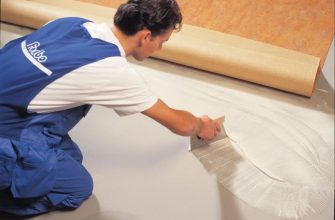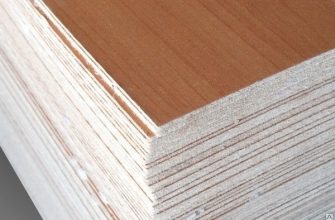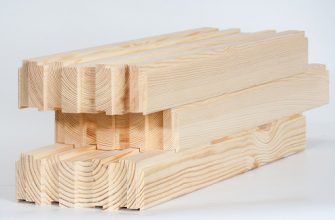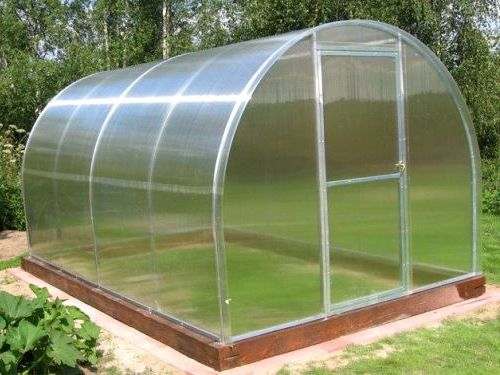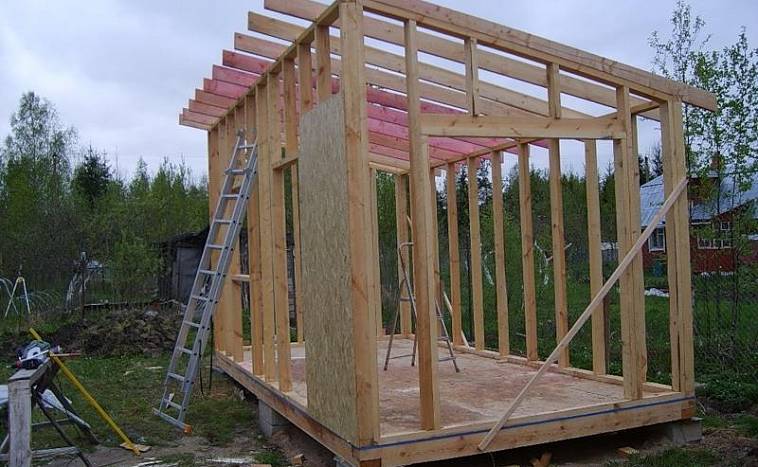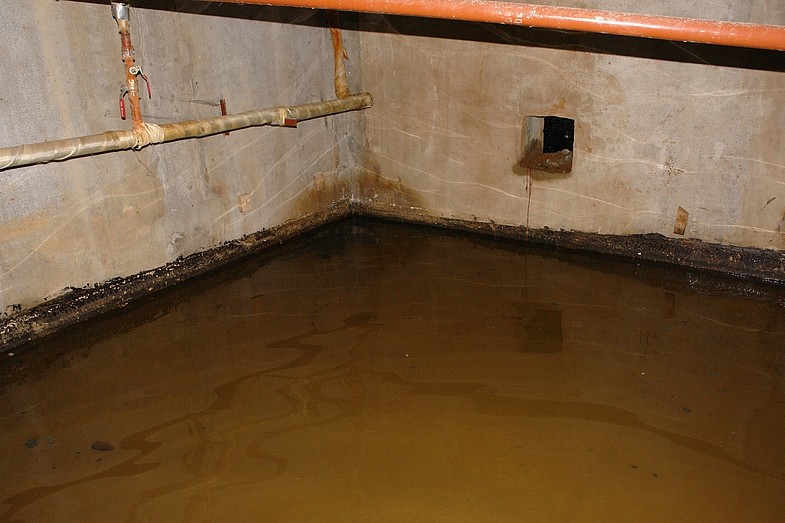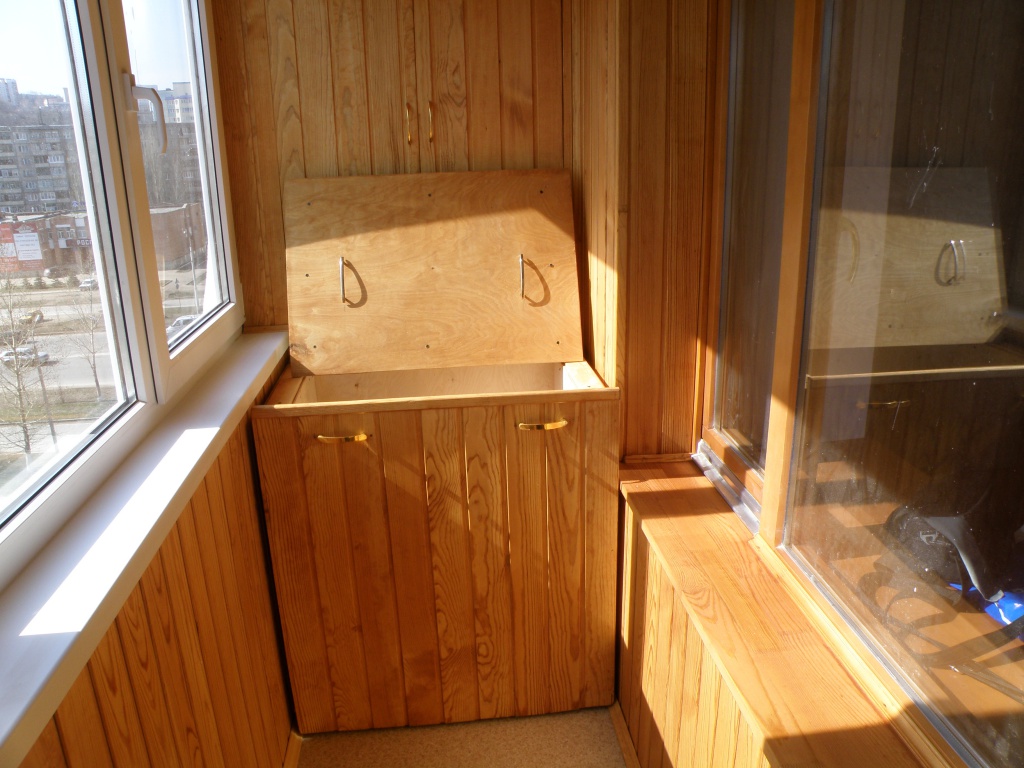Each country house or personal plot has a fence, the type of which depends on the financial capabilities and aesthetic preferences of the owner. Finishing materials presented on the market make it possible to arrange a fence in the same architectural style as all buildings on the site.
What materials are used for finishing pillars
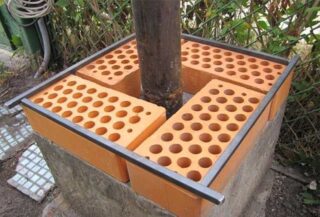
How to carry out the decorative finish of the fence, in each case, is decided differently. There are materials that initially have an attractive appearance, there are those that require additional finishing of the fence. For example, a concrete fence looks rather dull and requires cladding, while siding is attractive in itself.
For finishing the fence posts apply:
- decorative and Venetian plaster;
- clinker tiles;
- decorative and natural stone;
- tiles made of cement mixture, sand or clay;
- vinyl or metal siding;
- decorative bricks and PICS panels.
Decorative finishing of fence posts is an excellent opportunity to inexpensively and beautifully decorate the adjoining territory of a cottage or a private house.
Facing pillars with bricks
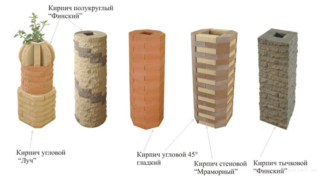
Finishing the fence posts with bricks requires the following operations:
- markup;
- laying the foundation and installing the support pillar (thick-walled pipe, channel, etc.);
- waterproofing;
- brick laying and strapping;
- filling the voids between the pillar and the cladding with concrete.
Brickwork is treated with a special impregnation that protects the surface from moisture and the appearance of white spots.
Stone finishing of pillars
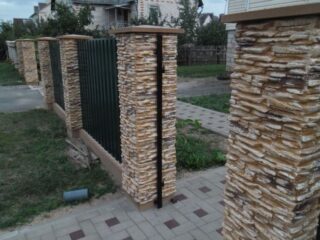
Facing pillars for a fence with a stone is a painstaking and rather laborious work. Natural stone (granite, marble, shell rock, etc.) gives the pillars increased strength.
When working, you must adhere to certain rules:
- the thickness of the material should not exceed 0.3 cm;
- the treated stone surface must be free of debris, dust and dirt;
- with a facing height of up to 1.5 m, the stone is fixed with glue;
- if the height of the cladding exceeds 1.5 m, special hooks are used to fasten the stones.
Stones can be laid:
- in the form of a slide: large stones are fixed from the bottom, and small ones from the top; their laying is possible and vice versa;
- in a messy state, which will simulate a natural stone fence.
Decorative stone is able to give the fence a certain aristocracy. Differs in a wide range of colors and textures, which makes it possible to make the pillar monochrome or variegated.
Siding application
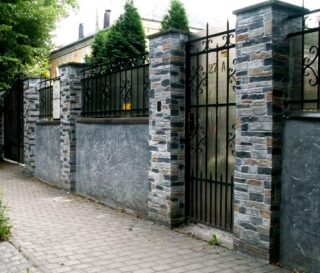
The use of siding for facing posts made of concrete, wood or brick is cost effective and has several advantages:
- has a long service life;
- the material has a wide range of colors and textures, which makes it possible to arrange the appearance of the pillars under a tree, stone, timber, etc.
Siding begins to be fastened from the bottom of the post, setting a starting bar there. A panel is inserted into it and fixed with self-tapping screws. Thus, the structure is built up to the very top, then fixing the panels with a finishing strip.
Imitation brick for outdoor decoration of the fence
The building materials market offers a large selection of decorative bricks with a variety of colors and textures.
Recently, polymer panels imitating brick pillars (PICS panels) have gained particular popularity. They are made from high quality polypropylene, which is not afraid of environmental influences.
Advantages and disadvantages of PEAKS panels
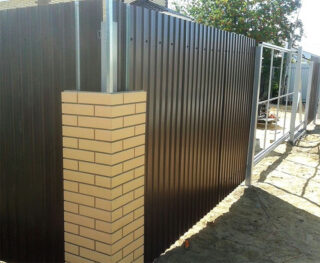
PICS panels, in comparison with other facing materials, have a wide range of advantages, for example, environmental friendliness and fire safety.
Other pluses
- They are lightweight and do not require any tools other than a screwdriver during installation.
- They do not need protective treatment and special care methods. Dirt from their surfaces is removed with a brush and soap solution.
- They have texture and color schemes that repeat with high precision the appearance of bricks and brickwork.
- Does not require foundation pouring.
- They are installed much faster than other finishing materials.
- Cheaper than brick at 5 ra.
- Reusable if carefully dismantled.
- They do not fade in the sun, do not peel off and have a long service life (at least 5 years).
PEAKS panels can be mounted on a ready-made fence. They can also be painted in any color without affecting performance.
Among the shortcomings of the new finishing material, the lack of mechanical strength and the lack of elements for the arrangement of corner posts on sale are noted. Such supports must be cut independently from two PIX panels.
Imitation of bricks for exterior decoration of the fence using PIX panels does not reinforce the structure of the fence, it performs only decorative functions.
Specifications
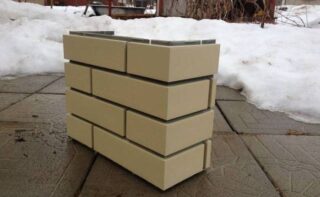
PICS-panels produced by the industry are U-shaped and have the following parameters:
- length - 380 mm;
- width - 300 mm;
- depth - 150 mm;
- wall thickness - 20 mm;
- weight - 0.5 kg;
- operating temperature range - -40 ... + 60 ° С.
On sale you can find PIX panels with dimensions 38x15x29.6 cm.
PEAKS panels are packaged in 12 pcs. with a total weight of 6 kg.
Colors: brown, yellow, cinnamon, chocolate, ivory.
Installation of PEAKS panels
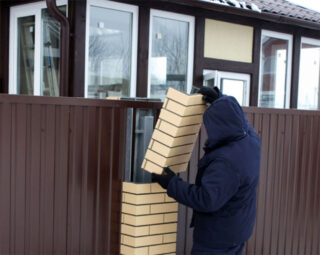
To install PEAKS panels you will need:
- screwdriver;
- bit for screwing in self-tapping screws;
- scissors for metal (if necessary);
- tape measure or folding rule;
- plumb line;
- 2 plastic or metal corners 20x20x1; the use of wooden blocks treated with an antiseptic is allowed;
- self-tapping screws (4 pcs are needed for one PIX panel).
The panels are installed as follows:
- At a distance of about 3 m from each other, the places of installation of false pillars are marked.
- The false post is assembled using the connecting locks on the PICS panels. Angles are attached to it with self-tapping screws on both sides.
- The corners of the false post are fastened directly to the fence with self-tapping screws. If necessary, trim the bottom panel with metal scissors.
With the help of a plumb line, you need to constantly monitor the verticality of the installation of false pillars.
The installation work is completed by installing protective visors that protect the false poles from dust, debris, snow or water getting inside.

